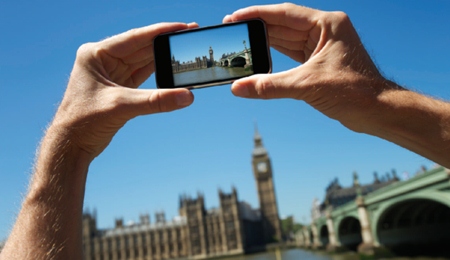I read a most interesting piece of research which came from the Sony people. According to the Sony survey, 72 percent of DSLR buyers only use their cameras to “capture family memories and for fun.”
Also, the greatest spur to buying a camera at a specific time is an imminent trip. These people are not going to do a crash course in serious photography before they take off, so the requirement of competent, fully automatic mode is reasonable. And wanting to get the best possible images is understandable. Then there is weight. Who wants to lug a brick around Venice when a small compact camera will do the job?
The compact camera section of the marketplace is certainly the most volatile. As Sony found, only 28 percent of camera buyers are going to go for the all-singing, all-dancing DSLR.

Those numbers look correct to me, with the bulk of the non-compact “cameras” being smart phones. There is no ignoring just how camera phones have taken over the position previously held by point and shoot cameras. The numbers say it all. By 2003, more camera phones were sold worldwide than stand-alone digital cameras.
In 2005, Nokia became the world’s most sold digital “camera” brand.
In 2006, half of the world’s mobile phones had a built-in camera.
In 2008, Nokia sold more camera phones than Kodak had done with film cameras and became the biggest manufacturer of any kind of camera.
In 2009, camera sales continued to slide as camera phones improved their auto- focus, zoom and low-light features.
In 2010 the worldwide number of camera phones totaled more than a billion and sales of separate cameras continued to decline. Even inexpensive mobile phones were being sold with a camera.
The physical make-up of camera phones is simpler than separate digital cameras. Their usual fixed focus lenses and smaller sensors limit their performance in poor lighting. Having no physical shutter, most have a long shutter lag. Most have no flash or optical zoom or tripod screw. Many lack a USB connection, removable memory card, or other way of transferring their pictures more quickly than by the phone’s inherent communication feature, be that 2G, 3G or 4G.
The principal advantages of camera phones are cost and compactness; indeed for a user who carries a mobile phone anyway, the additional size and cost are negligible. Smart phones that are camera phones may run mobile applications to add capabilities such as geotagging and image stitching, but most do not. A few high end phones can use their touch screen to direct their camera to focus on a particular object in the field of view, giving even an inexperienced user a degree of focus control exceeded only by ‘real’ photographers using a ‘real camera’ with manual focus.
What I have against camera phones (as well as the lack of sharpness in the image) is the lack of creative control. You cannot isolate the subject from the background by selecting the best focal length. Long time-exposures are not possible. Slow shutter speeds cannot be selected to give a speed blur effect. In fact, what you are getting is a very simple camera, where the Box Brownie was about 100 years ago.
Now, some of those complaints do apply to the very basic compact cameras, but the compacts have been upgrading. A mini-zoom is available in many of them. Canon’s new PowerShot G1X includes the ability to prioritize face detection of children, meaning that even the shortest attention span child’s expression will appear in focus.
Samsung’s DV300F will let users upload images and videos directly to Facebook, Flickr, Picasa and YouTube. It also includes a small screen on the front to let users see self portraits, which will make it a hit with Thai females, plus a feature called Motion Photo that lets users eliminate blurry backgrounds when capturing a moving subject in the foreground (and that sounds fairly useless to me).
However, back to the beginning, Sony’s advice is right: if you are not serious about getting to grips with the functions of a DSLR then don’t buy one. On the other hand, if you are deadly serious about your photography, don’t buy anything else.




